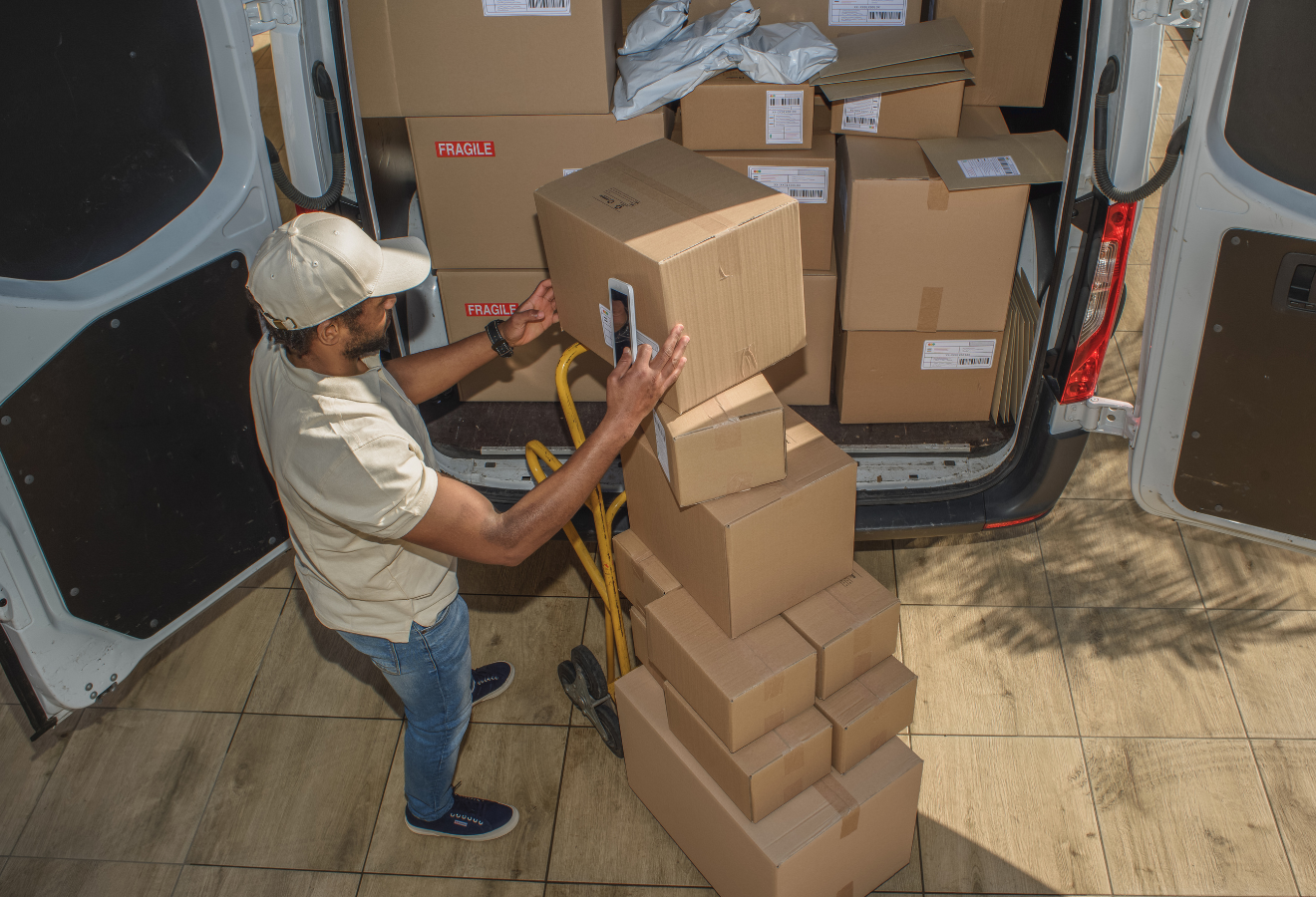Table of Contents
Running a business comes with a multitude of expenses, and as a business grows, managing overhead costs can become increasingly complex and third-party fulfillment can help reduce overhead costs. One area where companies often see significant savings is in fulfillment – the process of storing, packing, and shipping products to customers. For many growing businesses, especially those in the eCommerce sector, handling fulfillment internally can lead to mounting overhead costs that might strain profits. In contrast, third-party fulfillment (also known as third-party logistics or 3PL) offers a strategic solution to these challenges.
By outsourcing fulfillment to a 3PL provider companies, like Ideal Fulfillment, can streamline their operations, reduce inefficiencies, and ultimately lower overhead costs. In this article, we’ll explore the various ways that third-party fulfillment can help businesses reduce their operational expenses and create more cost-efficient business practices.

What is Third-Party Fulfillment?
Third-party fulfillment involves outsourcing the storage, packing, and shipping of your products to a logistics provider. Instead of handling these tasks in-house, you partner with a third-party fulfillment provider (3PL), who uses its facilities, technology, and expertise to manage your supply chain. The fulfillment process includes:
- Inventory Storage: The 3PL stores your products in their warehouse.
- Order Processing: When an order is placed, the 3PL picks, packs, and ships the product to the customer.
- Returns Management: Many 3PL providers also handle product returns or exchanges.
- Shipping: They manage relationships with shipping carriers, ensuring that your products are delivered on time and at competitive rates.
By outsourcing fulfillment, companies can reduce the need for investing in warehouses, shipping infrastructure, and labor, all of which contribute to overhead costs.
Key Ways Third-Party Fulfillment Can Reduce Overhead Costs
1. Elimination of Warehousing Costs
Managing your own warehouse can be one of the most significant overhead costsfor a growing business. Not only do you have to lease or purchase warehouse space, but you also need to maintain the infrastructure, utilities, and personnel to handle inventory management. For small to mid-sized businesses, this can be a major financial strain.
When you outsource fulfillment to a 3PL provider, you eliminate the need for warehousing entirely. 3PL providers typically have large-scale warehouses designed for efficiency, offering more storage space than most businesses would need at a competitive rate. Here’s how outsourcing helps:
- Reduced rent or mortgage expenses: By eliminating the need for your own warehouse, you don’t have to worry about long-term lease agreements or purchasing property. This can save your business thousands, if not millions, of dollars, depending on your location.
- No utilities or maintenance: Warehousing comes with additional costs, including utilities (electricity, heating, etc.), maintenance, and insurance. Outsourcing to a 3PL provider ensures that you don’t bear these costs.
- Flexible space and scalability: As your business grows, you’ll need more storage space. Most 3PL providers offer scalable solutions, meaning you only pay for the space you need at any given time. This flexibility allows you to scale up without committing to expensive long-term contracts.
In essence, outsourcing fulfillment means that warehousing is no longer a fixed cost but a variable one, tied to your actual business needs.
2. Reduced Labor and Staffing Expenses
Running an in-house fulfillment operation requires a skilled team to manage inventory, pick and pack orders, and handle logistics. This means paying for warehouse workers, inventory managers, packing personnel, shipping coordinators, and customer service staff. The costs associated with maintaining a fulfillment team can quickly add up.
Third-party fulfillment allows you to avoid these labor-related expenses. Fulfillment providers already have experienced teams in place, which means:
- No need to hire staff: With a 3PL provider, you no longer have to spend time and money recruiting, training, and managing fulfillment employees. You’re outsourcing these responsibilities to professionals who already have the necessary expertise.
- Reduced employee turnover: Fulfillment centers are often highly automated and operate with specialized employees who focus solely on the logistics side of the business. This reduces turnover and training costs associated with hiring new workers.
- Operational efficiency: Since fulfillment providers have the necessary infrastructure and staff in place, they can handle high volumes of orders much more efficiently than an in-house team could. This means fewer errors, lower rework, and higher productivity.
By reducing the need for in-house employees, you can cut payroll expenses and direct your resources elsewhere, such as marketing, sales, and business development.
3. Lower Shipping Costs
Shipping is another major overhead expense for businesses, especially eCommerce companies. Managing relationships with shipping carriers, negotiating rates, and ensuring timely deliveries can be a logistical nightmare, especially for small businesses without the buying power of larger enterprises.
Third-party fulfillment providers typically have strong relationships with shipping carriers and can leverage their volume to negotiate better rates for you. By outsourcing fulfillment, businesses can benefit from:
- Bulk shipping discounts: 3PL providers typically ship large volumes of products and thus qualify for discounted rates from carriers. This enables smaller businesses to take advantage of the same shipping discounts as larger companies.
- Optimized shipping routes: Many 3PL providers have multiple warehouse locations, which means they can store your products closer to your customers. This reduces shipping distances, leading to lower shipping costs and faster delivery times.
- Automated shipping management: Third-party fulfillment providers have integrated systems that automatically select the most cost-effective shipping option for each order, taking into account factors such as delivery speed, weight, and destination. This ensures that you’re always paying the lowest possible rate.
Outsourcing fulfillment reduces your overall shipping expenses, which can result in significant savings over time. Additionally, it allows you to offer more competitive shipping rates to your customers, improving satisfaction without sacrificing your margin.
4. Technology and Automation Savings
Technology plays a crucial role in managing fulfillment efficiently. From inventory management systems to order tracking and customer notifications, the right technology ensures smooth operations. However, investing in these systems in-house can be costly, both in terms of setup and ongoing maintenance.
When you outsource fulfillment, you gain access to the sophisticated technology and automation tools that fulfillment providers use to streamline their processes. These tools can help reduce costs in several ways:
- Inventory management software: 3PLs use real-time inventory management systems that track product availability, automatically updating inventory levels as orders are processed. This minimizes the risk of stockouts or overstocking, which can tie up capital and lead to costly errors.
- Order management and routing: Advanced order management systems ensure that orders are fulfilled in the most efficient manner, selecting the closest warehouse to the customer for faster delivery and lower costs.
- Automated workflows: Fulfillment providers use automation to speed up the picking and packing process, reducing labor costs and increasing throughput.
By leveraging the technology and tools that a 3PL already has in place, you can avoid the high upfront costs of purchasing and maintaining your own systems.
5. Reduced Risk and Liability Costs
Managing your own fulfillment process introduces several risks, including inventory loss, shipping errors, and customer complaints. These risks can lead to expensive returns, lost sales, and potential legal issues. 3PL providers are experts at managing these risks and often have insurance coverage to mitigate the costs associated with mistakes or accidents.
Outsourcing fulfillment helps reduce your exposure to these risks by:
- Providing insurance coverage: Most 3PL providers offer insurance for inventory loss, damage, or theft. This protects your business from the financial burden of damaged goods, which can be especially costly if you’re storing valuable or fragile items.
- Compliance management: Fulfillment providers also ensure that shipments comply with international shipping regulations, including taxes, customs duties, and packaging requirements. This reduces the likelihood of costly fines or delays at customs.
- Quality control: Third-party fulfillment companies have rigorous quality control processes in place, reducing the chances of shipping errors or faulty products. This helps minimize costly returns and refunds, which can hurt both your bottom line and customer satisfaction.
Outsourcing fulfillment reduces the time and money spent managing risks, allowing you to focus on the aspects of your business that directly contribute to growth.
6. Scalability Without Infrastructure Investment
One of the most significant benefits of third-party fulfillment is the ability to scale your business without the need for additional infrastructure or investment. As your order volume increases, a 3PL can easily accommodate the growth by offering more storage space, staff, and shipping resources.
Here’s how outsourcing fulfillment provides scalability at lower costs:
- Pay-as-you-go model: Many fulfillment providers operate on a pay-per-use model, where you only pay for the services you use, such as storage space and shipping volume. This allows you to scale up during peak seasons without committing to expensive long-term contracts or unnecessary investments.
- No capital expenditure: Scaling with your own warehouse would likely require a significant investment in new facilities, equipment, and staff. With a 3PL provider, you can quickly adjust to higher volumes without making major capital expenditures.
- Flexibility: Whether you’re experiencing a seasonal surge in sales or launching a new product line, a 3PL can help you manage fluctuations in demand without the headache of managing an in-house fulfillment team.
Scalability without infrastructure investment ensures that you can grow your business efficiently without incurring unnecessary costs.

7. Improved Cash Flow
By reducing overhead costs across warehousing, labor, shipping, and technology, third-party fulfillment directly contributes to improved cash flow. Rather than tying up capital in costly infrastructure, you can use the savings generated by outsourcing to reinvest in other areas of your business, such as marketing, R&D, or expanding your product line.
Additionally, with more efficient fulfillment, your products are delivered faster, which can result in quicker customer payments and better inventory turnover. This improved cash flow further helps you grow without the constraints of high operational costs.
Conclusion
Third-party fulfillment offers businesses a strategic way to reduce overhead costs, streamline operations, and achieve greater efficiency. From eliminating warehousing and labor costs to benefiting from shipping discounts and technology automation, outsourcing fulfillment helps companies cut unnecessary expenses and focus on activities that directly contribute to business growth.
By leveraging the expertise and infrastructure of a 3PL provider, businesses can scale without the need for significant upfront investment, manage risks more effectively, and improve overall operational efficiency. Ultimately, third-party fulfillment not only reduces costs but can also contribute to better cash flow, customer satisfaction, and long-term success.
For businesses looking to reduce overhead and stay competitive in today’s fast-paced market, third-party fulfillment is a game-changer that should not be overlooked.
